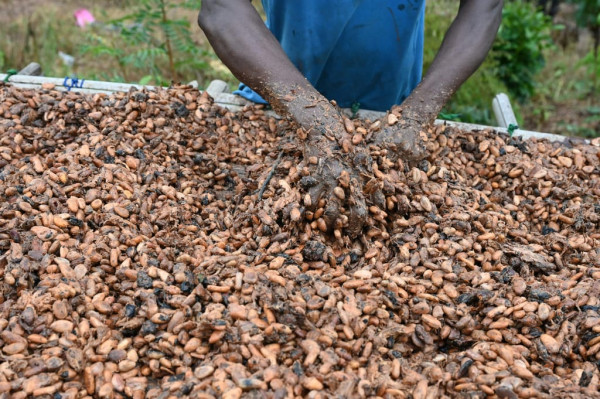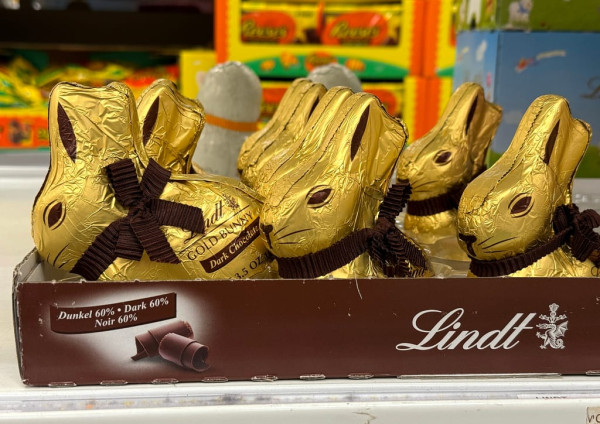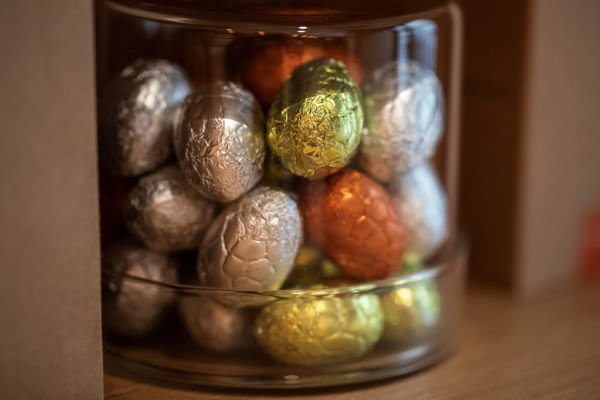Big Chocolate is conning you this Easter
BRUSSELS — The Royal Gallery of Saint-Hubert in the Brussels Old Town is a noisy place. Fashionistas maul the haute couture; families chomp on waffles under its 19th century arches. But it’s the smell that guides you to the money. Aromatic, caramelly, roasted: The scent of chocolate wafts out of stores where customers drop €10, €20 and even €50 for their creamy brown fix.
“The prices are astronomical,” confessed Géraldine Sac, manager at Les Délices du Roy, a dessert shop, as she pointed out the worst offenders in the gallery. “I don’t know why people keep paying them.”
Europeans are entering a brave new world for chocolate this Easter. From Scotland to Sicily, people are paying up to 50 percent more for their bars and eggs than last year, as major groups take advantage of a supply crunch to jack up prices. Companies claim they are only adapting to the soaring cost of cocoa beans, which are trading at five-decade highs.
However, observatories reveal that many are not just passing the cost onto consumers, but taking a fat helping on top. “Greedflation” is the name of the game, whether through steeper prices, smaller packaging or reducing the cacao content in favor of cheaper ingredients such as fruits, nuts and vegetable oils.
“Everyone says ‘the consumer this’ or ‘the consumer that,’” said Nicko Debenham, managing director of Sustainability Solutions and ex-head of sustainability at Barry Callebaut, the world’s largest chocolate maker.
“The consumer doesn’t have a clue, okay? He doesn’t have a clue,” he told POLITICO.
Supply crunch
That ignorance stretches back to the pod. For Désiré Adon and Magloire Kra, Belgian boutiques are a world away. The two cocoa farmers from Ivory Coast earn barely 1,000 Central African francs (CFA), about €1.50, for each kilogram of beans they sell. The main harvest is from October to January, and this year’s has been among the worst in living memory.
“It’s misery,” said Adon, speaking to POLITICO by phone from his small plot north of the capital Abidjan. Extreme weather caused by the El Niño climate phenomenon has hit the country, which alongside neighboring Ghana produces 70 percent of the world’s cocoa.

First came the rains, hammering Adon’s land with unseasonal ferocity. Then pests followed, spreading diseases like black pod and swollen shoot that decimated his crop. Lack of investment means he can’t afford fertilizers or pesticides for his aging trees, knocking down yields even further.
The crisis in west African cocoa has sheared a tenth off global supply, sparking an industry-wide shortage. Processing factories in Ivory Coast are running out of beans to make cocoa butter and liquor, the key ingredients in chocolate. This has driven cocoa prices through the roof, from a hearty €4,000 per metric ton in early January to a gluttonous €9,000 in late March.
Adon and Kra don’t see any of that bounty. Their 1,000 CFA-per-kilogram rate is set twice per year by a state-owned enterprise, which ensures a floor price for when markets are down, but also caps their income during bonanzas. Ghana and Ivory Coast are trying to change that by creating an OPEC-style cartel, but Big Chocolate has for years refused to pay more.
“Cocoa is just not profitable,” Kra insisted from his depleted field near the Liberian border. The past response to falling yields has been to cut down rainforest and plant fresh saplings in the ultra-fertile soil. Now, however, farmers can’t even do that, as the upcoming EU Deforestation Regulation will boycott producers growing on denuded land.
“The situation we have today is here for the long-term,” predicted Bakary Traoré, director of the Initiatives for Community Development and Forest Conservation, an Ivorian NGO that monitors cocoa markets.
Eggspensive Easter
This scarcity has led chocolate makers to up prices, blaming a doubling of input costs. Lindt & Sprüngli told POLITICO they had increased their rates by 10 percent on average last year, while fairtrade brand Tony’s Chocolonely reported a roughly 7 percent bump. Mondelez, Ferrero and Neuhaus did not respond to requests for comment, but seem to have passed equivalent hikes.

This makes some sense. The bean content in a finished product is up to 11 percent, so if the cocoa in a €1 bar doubles in price, the sticker on the bar itself can reasonably increase to €1.11. “If it's even €1.20, then you're thinking okay, sort of justifiable,” said Nicko Debenham, who has spent three decades trading cocoa.
That's especially true given the nature of commodities. Chocolate makers lock in their raw ingredient purchases years in advance, buying futures contracts to shield themselves from price volatility. The further ahead you buy, the better you are hedged.
The problem, it seems, is that most chocolate brands were poorly hedged, several experts told POLITICO, and so have passed their higher costs on to consumers. In many cases, however, this has gone far beyond the 10 to 20 percent that may be warranted. Across Europe, Easter eggs in particular have skyrocketed in price, with consumer observatories in the U.K., Italy, Germany and the Netherlands seeing eye-watering levies.
In the U.K., a Mars Malteser Truffles Luxury egg has jumped 62.5 percent at Waitrose, from £8 in February 2023 to £13 last month. Lindt’s Five Gold Bunny Milk Chocolate has leapt 55 percent at Asda, from £2 to £3.11. Meanwhile, Ferrero’s Rocher Golden Easter Egg is up 50 percent at Tesco, and Mondelez’ Cadbury Mini Eggs Large Pouch has topped 46 percent at Ocado.
“Even if there are rises in some of the other ingredients, there’s no bloody way [the cocoa price has pushed them] that high. So it looks like what you'd call greedflation,” Debenham said.
Indeed, despite the cocoa crisis, Hershey’s and Mondelez made tidy profits last year. Barry Callebaut has boosted margins “through its cost-plus pricing model,” and Lindt reported with satisfaction this month that “consumers have accepted price increases for their favorite chocolate and have remained loyal to our brands.”
The bad guys
Talk to any manufacturer, though, and they will deny being the bad guys. To them the true price gougers are hiding in plain sight: the supermarkets.
“Decision making on pricing is stronger at the retail level,” argued Debenham, noting the superior market power of stores in deciding what goes into the aisles and at what price. Most would agree, said Antonie Fountain, managing director at the VOICE Network, a chocolate NGO: “I would probably say the retailers [are the ones making a killing].”

“We've had years and years of retailers raking in the profits,” he told POLITICO, while noting that specific values depend on the country. “In some countries, chocolate is where you get your profit margins and in other countries chocolate is the discount product [with which] you get your consumers into the supermarket.”
One 2020 report by French institute Le Basique found that for a dark chocolate tablet sold in France, both the manufacturer and the retailer got 37 percent of the value, compared to 7 percent for the exporter and 6 percent for the processor.
Whoever's the culprit, it’s the consumer who ends up paying, laments Géraldine Sac, manager at Les Délices du Roy in Brussels. “Chocolate is becoming a luxury product now.”